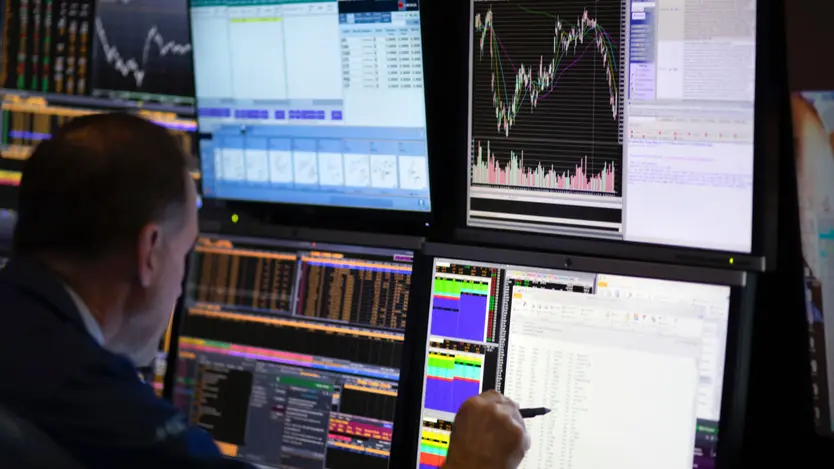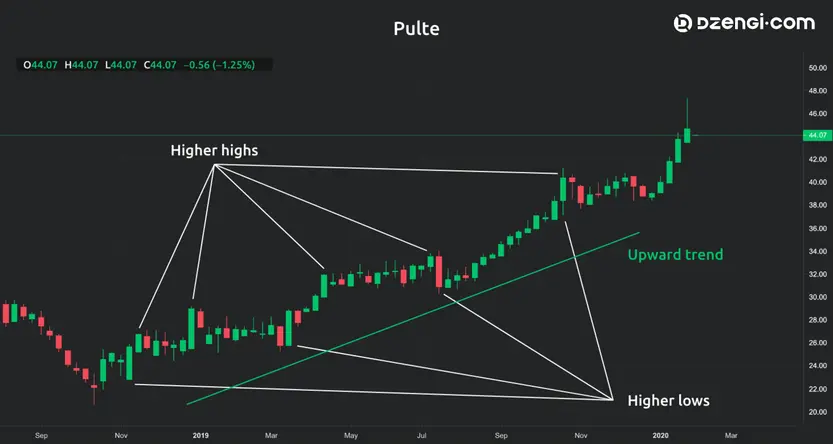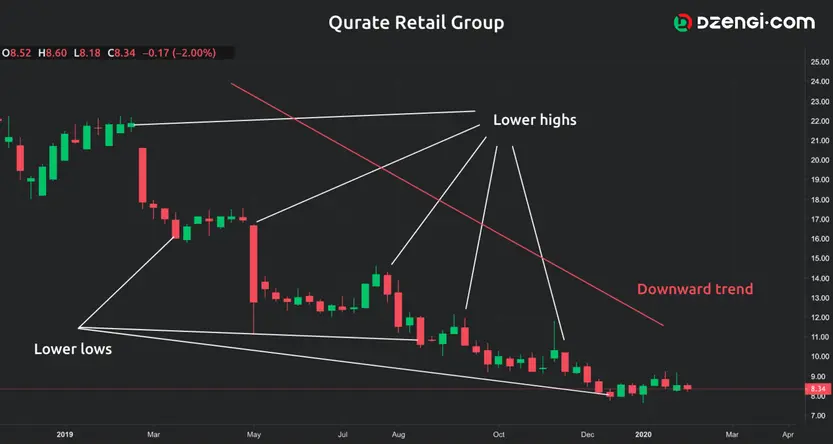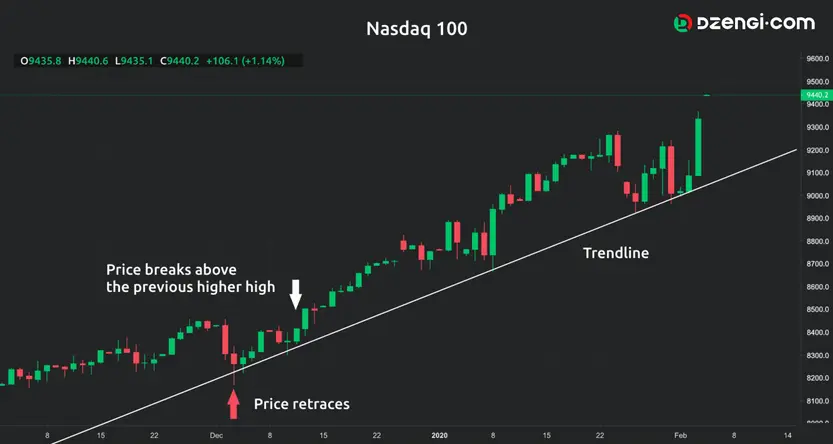Trend trading strategies are popular because their signals can give you high profits

What is trend trading?
In general, technical analysis is based on the idea that there are repetitions in price movements and that traders can use them for identifying patterns in the way a price moves over time. Accordingly, it can be said that you can forecast how a market will move in the future when you apply a suitable trading method.
One popular way through which traders can anticipate the price movement is the trend trading approach. You may have heard the phrase “the trend is your friend”, which means that with trend trading you will make profits by opening positions in the direction in which the price will move.
For example, you can identify an upward trend if the price continuously forms higher peaks followed with higher lows during the reference period. Take a look at the graph.

Here the price movement displays an upward trend. The price makes higher highs followed by a pullback and higher lows. Additionally, you can take a closer look at the difference in the price around the start of the trend and the current price.
A downward trend can be identified as a series of price movements exhibiting lower lows in combination with lower highs during a specific period, as shown in the graph below.

The price action displays lower lows and lower highs with a price retracement in between.
During an upward trend, the trader will open long positions (buy the underlying assets), whereas in a downtrend you will enter a short position (sell the reference asset).
For instance, trend trading can be used for position trading when traders tend to maintain a long position until or near the end of the trend by being immune to potential daily pullbacks, i.e., when the price retraces to higher lows during an upward trend.
Depending on the market conditions, a price can maintain its trend for days, weeks or months. Keep in mind though that traders can achieve better results as they consider the long-term direction of the price movement.
Although the trend trading is considered to be a mid to long-term trading methodology, some people apply trend trading strategy on shorter time frames to open or close their intraday positions. Keep in mind that trend trading is applicable across different markets and different types of instruments.
What to consider during a trend trading?
In a trend-following approach, there are several steps you take: identify a trend, decide when to enter a position, define your exit points and take your profits – and initially set up a stop-loss level or trailing stop after the trend is confirmed.
You can look initially at the price chart to identify probable trends and potentially anticipate your trading positions. In general, you will be looking into the retracement points and try to identify a trend and its direction. Plotting a trendline on your chart can make this process quite easy. The trendline connects the lowest point of the retracements or the pullback with the consecutive higher lows. During an uptrend, trend traders can open positions when the price moves above the previous high after a retracement to a higher low has taken place.

The red arrow shows the price retracement and that the price starts to rise. When the price moves above the previous higher high level (the white arrow) a trader may enter a buy position. Of course, one way to determine this entry signal is to try and identify similar patterns in the price movements in the past.
Trend trading strategies
The trend trading approach usually means a combination of price action and different technical analysis indicators. These can help you identify when the price will move in a trend or they could provide alerts for a potential trend reversal. The indicators can also give you an insight into the trend strength along with other aspects for the assets such as volume and volatility level.
By using different indicators in your strategy, you will be able to detect potential reversals or to avoid certain pullbacks which could capture your stop-loss before the price rockets in the trend direction. Based on the indicators, you can define an adequate stop-loss level.
Some of the heavily used trend indicators are the moving averages Average Directional Index (ADX), Ichimoku cloud and the parabolic SAR. You can also use the trendlines and chart patterns which can aid your entry and exit decisions.
The trend line can act as a support level during an uptrend or as a resistance level during a downtrend. Accordingly, traders can decide to take a long position when the price bounces from the support level, or a short position when the price bounces from the resistance level. A simple strategy would be a combination of moving averages and crossover signals by looking at the way the faster moving averages crosses the higher time frame average.
Some traders also open trades based on price swings during a strong trend by entering a position when the price pullbacks begin and close the position before the prices reverse toward the trend direction. Trading the swings is more of a short-term trading approach and can provide smaller profits but multiple times.
Keep in mind that, although trend trading looks relatively simple, not all trades are profitable because the trend may reverse or sudden price swings can catch your stop-loss. However, if executed properly, you can have positions with high profitability. Try to test the accuracy of the signals identified with your strategy before you commit your money.
Advantages of trend trading
- You have the opportunity to execute trades with high profitability if you open and close your position at the right time;
- It requires substantially less of your time than day trading;
- There are lower trading costs since you will make fewer trades and maintain your trades for a more extended period;
- Trend following is quite a simple approach as long as you don't overcomplicate it by using too many indicators
Limitations of trend trading
- It requires patience because traders should wait for the price action to form a trend and you need to wait before you collect any profits;
- It may take some time for a trend to be formed on a higher time frame;
- Although it can offer high profitability, you must be prepared to accept that you may have a higher number of losing trades compared to profitable trades. Keep in mind that the profitable positions can provide substantial gains which will offset the losses.
FURTHER READING: Trading biases: the human flaws that cost investors money
FURTHER READING: How to trade the Head and Shoulders chart pattern

